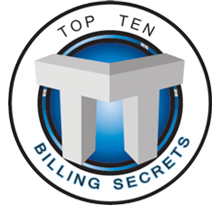Business and True Motivation
It’s no mystery why we venture to go into business for ourselves… We want to make customers happy. Yea right! Let’s be honest; we are in business to be successful and make money. Income is the number one motivation for business ownership and if we happen to offer a good product or service, our chances for success increase exponentially.
It’s safe to say that getting paid is one of the most exciting aspects of owning a business and we work hard to make the most of our bottom line and keep profits flowing. If this is true, why do we allow a small percentage of customers to play games when it comes to paying? Why are some clients so difficult?
For one, they usually get away with it. Some customers are so good at playing games that even the most experienced business owners get worn down from chasing money. Difficult people challenge our continued efforts to get paid and the confrontation can be extremely frustrating. Non-paying clients exist in virtually every business and they are skilled at the art of not paying and why not? The money is in their pocket and all you’ve got is the stress of trying to collect.
The good news is that every non-paying customer can be brought into a habit of payment. Moreover, you can play their game and win. Game on!
Once you know your opponent you can implement strategies to overcome the obstacles that delay payment. Great strategies can stop professional debtors even when they try to adapt and continue their charade. There is always a way through their apathy and once you learn the tricks, it makes for a better more enjoyable business now and all future business as well.
Now that you have acknowledged that there are some ongoing challenges, let’s look at some solutions.
The first thing you must do is look at your current process. Are there weaknesses that allow customers to take advantage? It’s so important that you take some time to examine your own process.
Take some time to analyze the following:
- Your procedures from the very first meeting with a potential client
- Your documents including invoices, payment reminders and past due notices
- Your methods of payments and the ease of making payments to you
- Your collection methods
After you review your system, take some time to evaluate some individual cases (Prior non-payers) and investigate what happened to determine why they did not pay. While each case can be significantly different, many underlining issues can be traced to one or more areas that customers use to exploit your billing and collection techniques. Obviously, these areas, once identified must be corrected immediately.
Your company may be the type of business where you are forced to wait for payment. In other words, the client is waiting to get paid so they have to make you wait. Some clients know they have you over a barrel and abuse the system. They make you wait far beyond the reasonable time and earn interest on your money. They are intentionally hamstringing you for payment. This challenge is created by habit of historical process. For example, you don’t want to push too hard for fear of losing the client, so they take advantage pushing the envelope a little further each time.
You may be under the assumption there’s nothing you can do about it because that’s how it’s been for years. Believe it or not, you can set yourself up so you are not abused, but why do so many continue to follow this frustrating pattern? This may have plagued you for years and you have thought of everything. Outside advice may be your biggest opportunity to finally change this. There are two choices, do something about or allow it to continue. The documents you use and your approach and strategies determine the speed in which you get paid.
Recently we worked with a company with a very high deficiency in their accounts receivable. After investigating the reason for this default rate, we redesigned the invoices, by changing the statement “Due upon Receipt” to include a specific date such as “Payment of $1,370.00 Due on June 2nd.” We also purchased a box of bright yellow return envelopes to mail out with the invoice. Then we changed the format of the invoice to look more like a payment reminder than an invoice. Research has shown that people respond better to a letter form than an invoice. It’s more personal. Changing the invoice caused his default receivables to decrease exponentially. Then we looked at his process from first meeting of each client. We implemented ways that improved contact to the customer, created incentives for faster payments and payments options that made it easier to pay their bill. This caused another increase in revenue.
Finally, getting paid does not have to be frustrating but many choose to believe they can do nothing about it and they keep making the same mistakes expecting different results. Why do we allow some customers to dictate when and how they will pay? It’s simple. We need to train them to pay on time.
Christopher Mangan is the President of CJM Billing Solution, Inc. and the author of the Top 10 Billing Secrets.













Comments